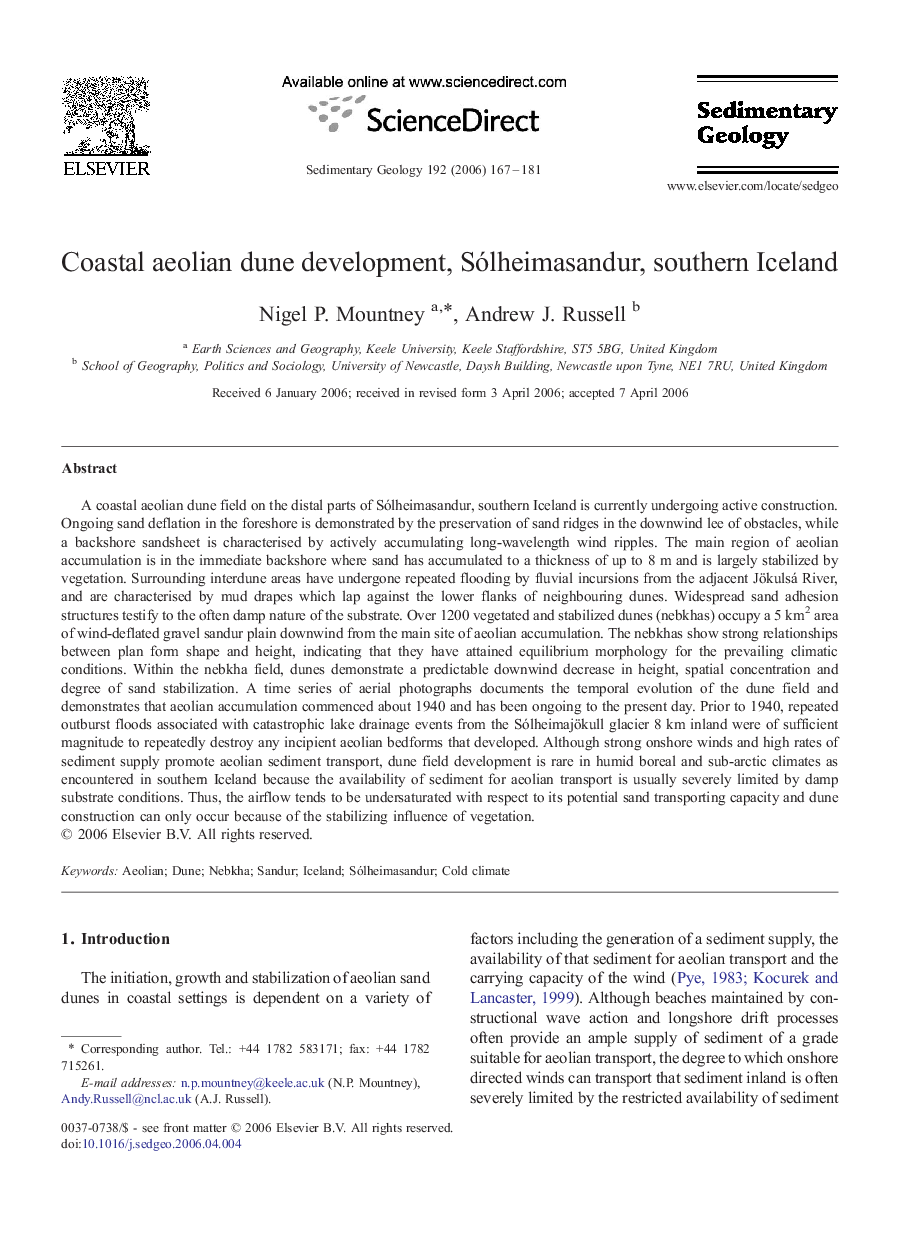| کد مقاله | کد نشریه | سال انتشار | مقاله انگلیسی | نسخه تمام متن |
|---|---|---|---|---|
| 4690928 | 1636179 | 2006 | 15 صفحه PDF | دانلود رایگان |

A coastal aeolian dune field on the distal parts of Sólheimasandur, southern Iceland is currently undergoing active construction. Ongoing sand deflation in the foreshore is demonstrated by the preservation of sand ridges in the downwind lee of obstacles, while a backshore sandsheet is characterised by actively accumulating long-wavelength wind ripples. The main region of aeolian accumulation is in the immediate backshore where sand has accumulated to a thickness of up to 8 m and is largely stabilized by vegetation. Surrounding interdune areas have undergone repeated flooding by fluvial incursions from the adjacent Jökulsá River, and are characterised by mud drapes which lap against the lower flanks of neighbouring dunes. Widespread sand adhesion structures testify to the often damp nature of the substrate. Over 1200 vegetated and stabilized dunes (nebkhas) occupy a 5 km2 area of wind-deflated gravel sandur plain downwind from the main site of aeolian accumulation. The nebkhas show strong relationships between plan form shape and height, indicating that they have attained equilibrium morphology for the prevailing climatic conditions. Within the nebkha field, dunes demonstrate a predictable downwind decrease in height, spatial concentration and degree of sand stabilization. A time series of aerial photographs documents the temporal evolution of the dune field and demonstrates that aeolian accumulation commenced about 1940 and has been ongoing to the present day. Prior to 1940, repeated outburst floods associated with catastrophic lake drainage events from the Sólheimajökull glacier 8 km inland were of sufficient magnitude to repeatedly destroy any incipient aeolian bedforms that developed. Although strong onshore winds and high rates of sediment supply promote aeolian sediment transport, dune field development is rare in humid boreal and sub-arctic climates as encountered in southern Iceland because the availability of sediment for aeolian transport is usually severely limited by damp substrate conditions. Thus, the airflow tends to be undersaturated with respect to its potential sand transporting capacity and dune construction can only occur because of the stabilizing influence of vegetation.
Journal: Sedimentary Geology - Volume 192, Issues 3–4, 15 December 2006, Pages 167–181